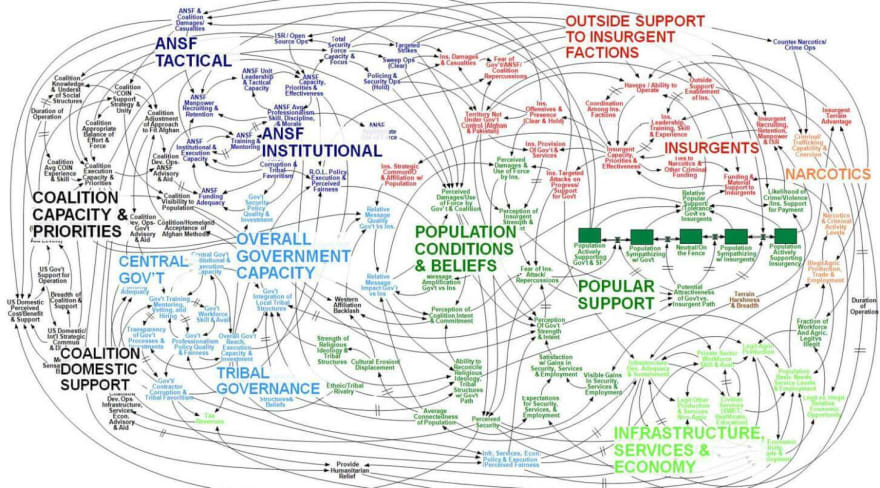Is safe to say, the framework SAFe™ embodies everything wrong with the so-called Agile Industrial Complex. Is so bloated and focus on the wrong things that are not even remotely agile in the sense of the original manifesto. I’ll argue how SAFe™ do more harm to the community than generates value and is devoid of any agility. Pay for your training, get your certificate, some taps on the back and... whatever. SAFe™ is so bad that makes the case for Waterfall looks like a good idea.
I don’t know who needs to hear this, but is safe to say: SAFe™ is not agile. Jeff Gothelf made a post with exactly this title in May 2021. Since they shove up Lean UX in version 4.5 of the framework, people keep asking Gothelf about how both work together. But the “adoption” of Lean UX was more of “let’s add a couple buzzwords more” with no regard to principles, methodologies or alignments. Gothelf is the author of Lean UX, and about how works within SAFe™ this is his position:
The slightly longer answer is that all the principles we’ve built into Lean UX don’t seem to exist in SAFe.
There's quite a lot of anti-Agile sentiment in software development circles at the moment. I think we've reached the point where a critical mass of developers have never experienced how terrible "Waterfall" was as a planning methodology, and think it sounds like a good plan🤦♂️08:00 AM - 18 Jun 2021
Is less “anti-Agile sentiment” and more “anti-Agile Practices™️”. SAFe™ is this Cthulhuian Azathoth-like cosmic horror framework that is driven the bad rep and the harm is doing to the development environment. This isn’t some kind of ‘homebrew’ agile we see selling — SAFe™ is straightforward a vapor agile framework to sell certifications. ToughtWorks place in their hold category, the Proceed with caution, which is a polite way to say Run.
Our positioning regarding "being agile before doing agile" and our opinions around this topic shouldn't come as a surprise; but since SAFe™ (Scaled Agile Framework®), per Gartner’s May 2019 report, is the most considered and most used enterprise agile framework, and since we're seeing more and more enterprises going through organizational changes, we thought it was time to raise awareness on this topic again. We've come across organizations struggling with SAFe's over-standardized, phase-gated processes. Those processes create friction in the organizational structure and its operating model. It can also promote silos in the organization, preventing platforms from becoming real business capabilities enablers. The top-down control generates waste in the value stream and discourages engineering talent creativity, while limiting autonomy and experimentation in the teams. Rather than measuring effort and focusing on standardized ceremonies, we recommend a leaner, value-driven approach and governance to help eliminate organizational friction such as EDGE, as well as a team cognitive load assessment to identify types of teams and determine how they should better interact with each other.
ToughtWorks Radar 24 Hold technique: SAFe™
Agily McAgileface
This could be a map for SAFe™ but no, is just a slide that was actually used in a briefing to the commanding general of U.S. forces in Afghanistan, Stanley McChrystal. It purported to explain U.S. counterinsurgency strategy in Afghanistan, all on one slide.
The first time I saw this as “agile” on Twitter I laugh. I thought it was just satire. This is actual SAFe™ map. Find the errors:
This is called "SAFe 5 for Lean Enterprises".
Other ways SAFe™ harmful? It violates the very first agile value: “Individuals and interactions over processes and tools”, being an upside-down version of it and is a truly industry (“used by 1,000,000 people in 20,000 organizations around the globe”! So much suffering in the world... gives me a broken heart) of a bloated framework that makes not only Waterfall looks like a good idea but is bad for the lean, agile and DevOps thinking and practices.
 Allen Holub@allenholub
Allen Holub@allenholub Just curios, but has anybody seen an article endorsing SAFe written by someone who (1) actually understands and has worked in an agile environment (so no non-programmer journalists), and (2) doesn’t profit by selling SAFe training, consulting, books, &c.?19:27 PM - 21 Jul 2021
Just curios, but has anybody seen an article endorsing SAFe written by someone who (1) actually understands and has worked in an agile environment (so no non-programmer journalists), and (2) doesn’t profit by selling SAFe training, consulting, books, &c.?19:27 PM - 21 Jul 2021
Scaled Agile Framework® and SAFe™ are trademarks of Scaled Agile, Inc. When I just copied the title of their map, just "SAFe 5 for Lean Enterprises", of course they inject some text on my clipboard:
© Scaled Agile, Inc.
Include this copyright notice with the copied content.
Read the FAQs on how to use SAFe content and trademarks here:
https://www.scaledagile.com/about/about-us/permissions-faq/
Explore Training at:
https://www.scaledagile.com/training/calendar/"















Top comments (2)
I have seen that this can be a challenge in some SAFe programs
Agile needs to apply to all levels of an organization.
There's also a risk on focusing on feature factories rather than built-in quality despite all the buzzwords in the SAFe maps such as Continuous Exploration and Continuous Delivery.
Agreed.
Three years ago I had a presentation about the history of agility as a practice and the separation between the "agile industrial complex" and "agility" as a concept forwarded by the Agile Manifesto.
Basically, going a bit alongside the last post screenshot here, indeed: of the people involved in formulating the Manifesto, how many are standing behind all the capitalisation horror that came from it? Basically, those that had some success with "frameworks" preceding the Manifesto (thinking the Crystal set of frameworks) and those making money from selling Agile to the masses (Scrum.org / Scrum Alliance and all other pseudo-Agile).
Dave Thomas in his series of presentations inspired by his essay "Agile is Dead" dubs SAFe as "Shitty Agile for Enterprise" and for a good reason.